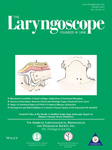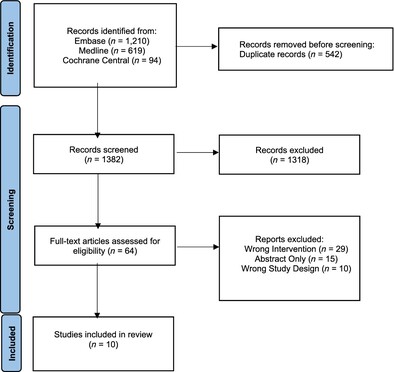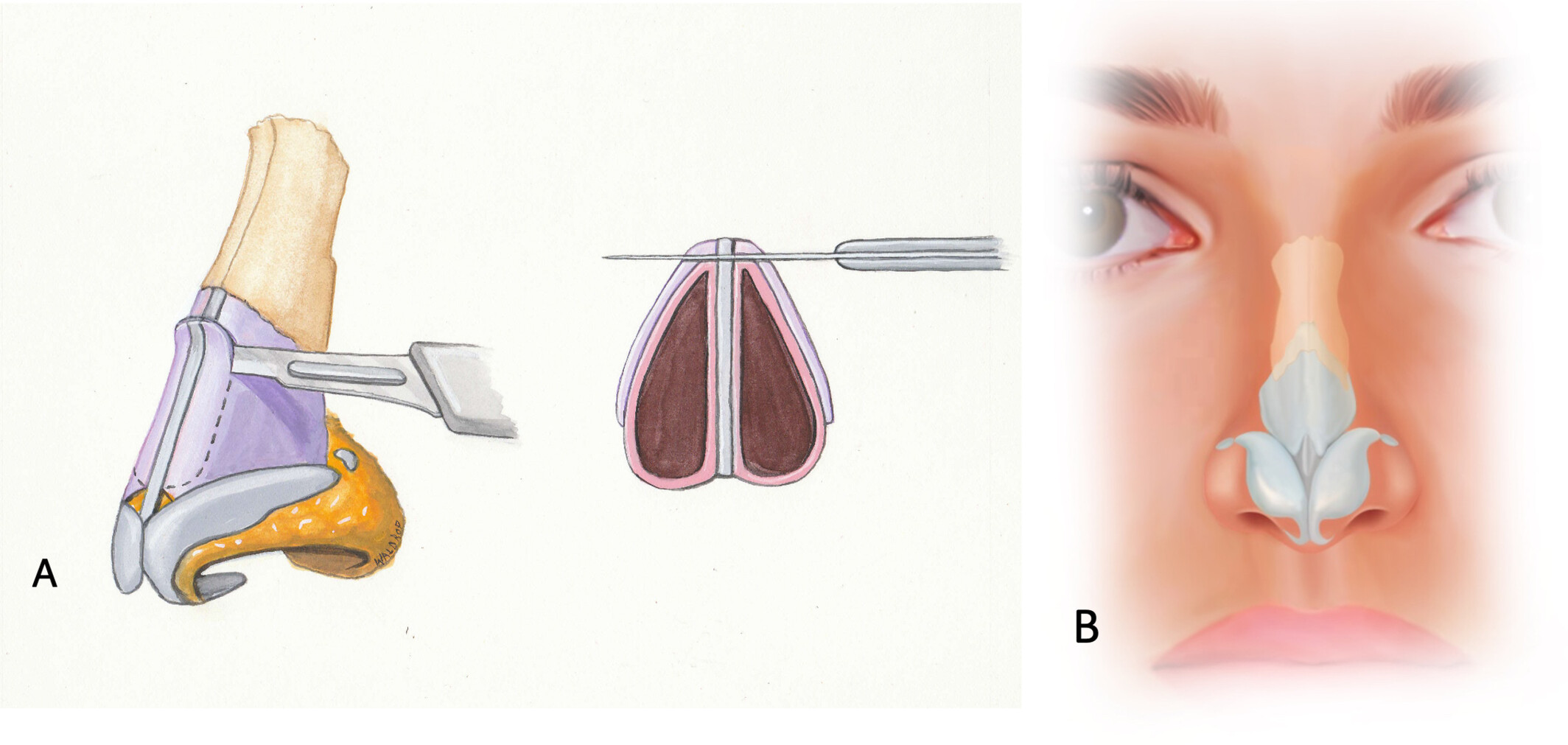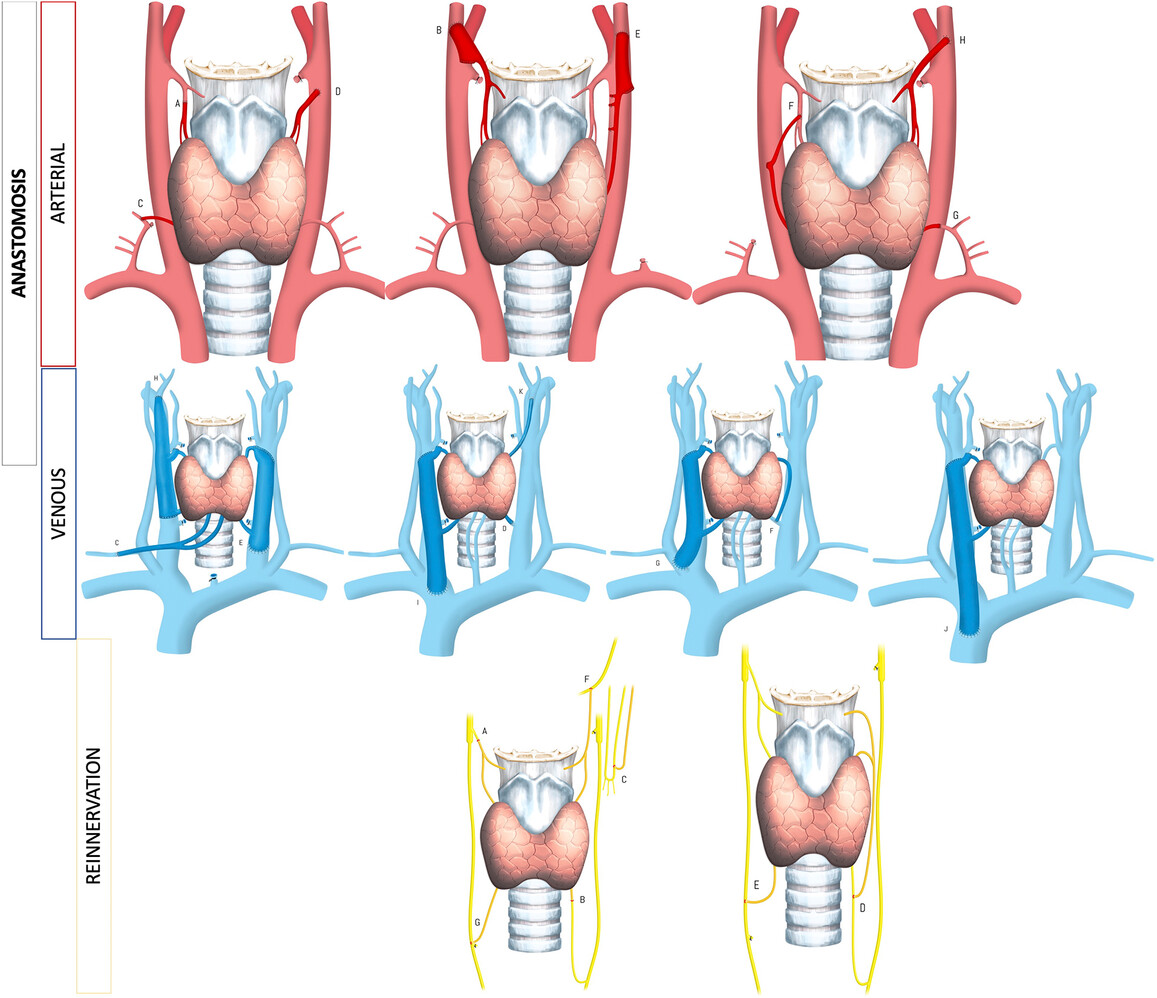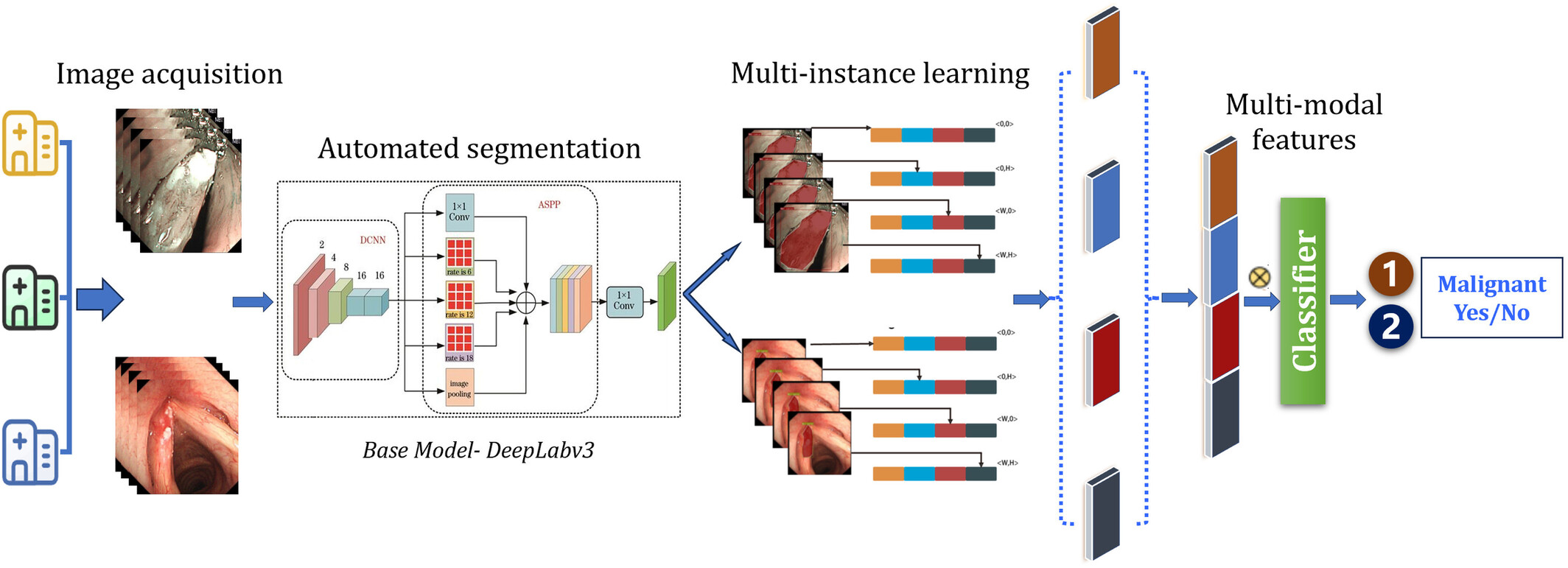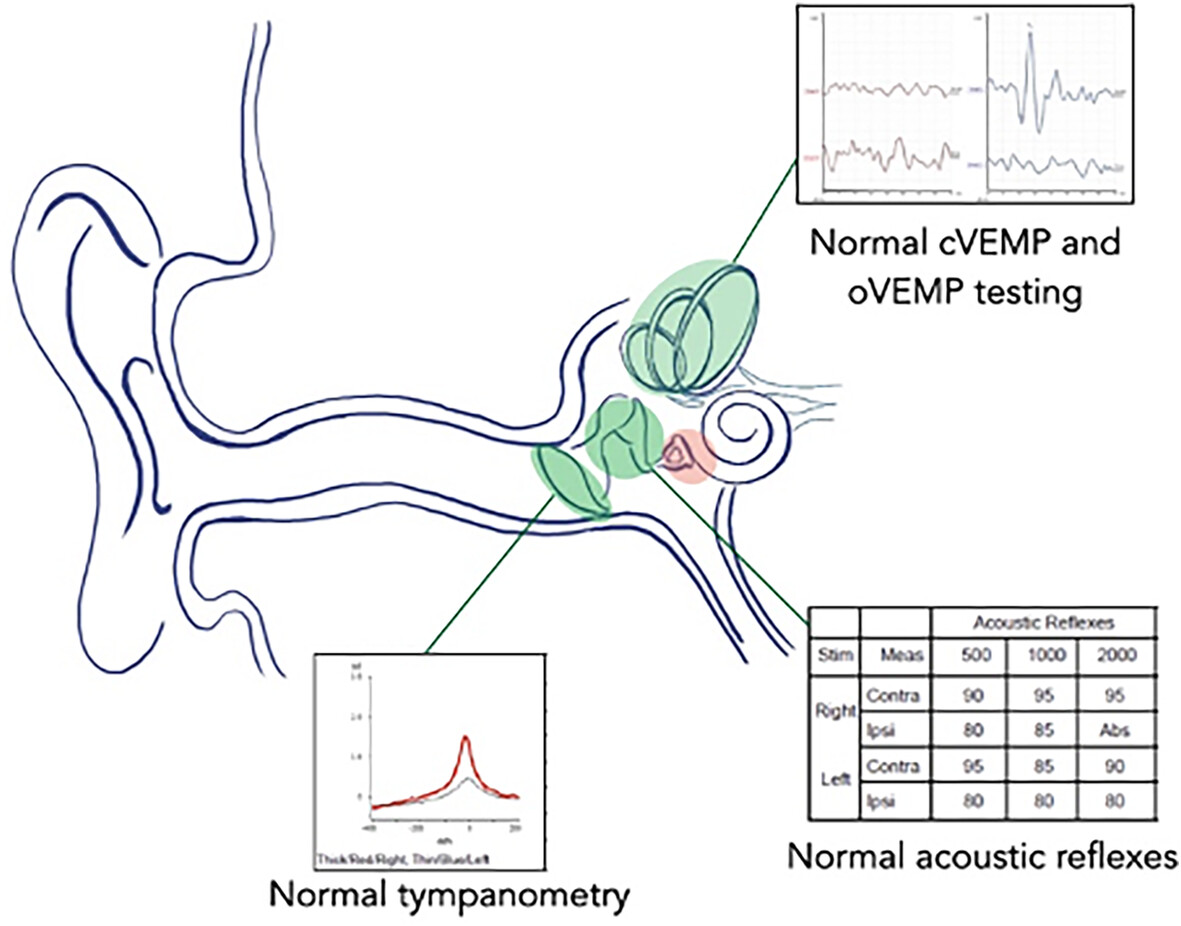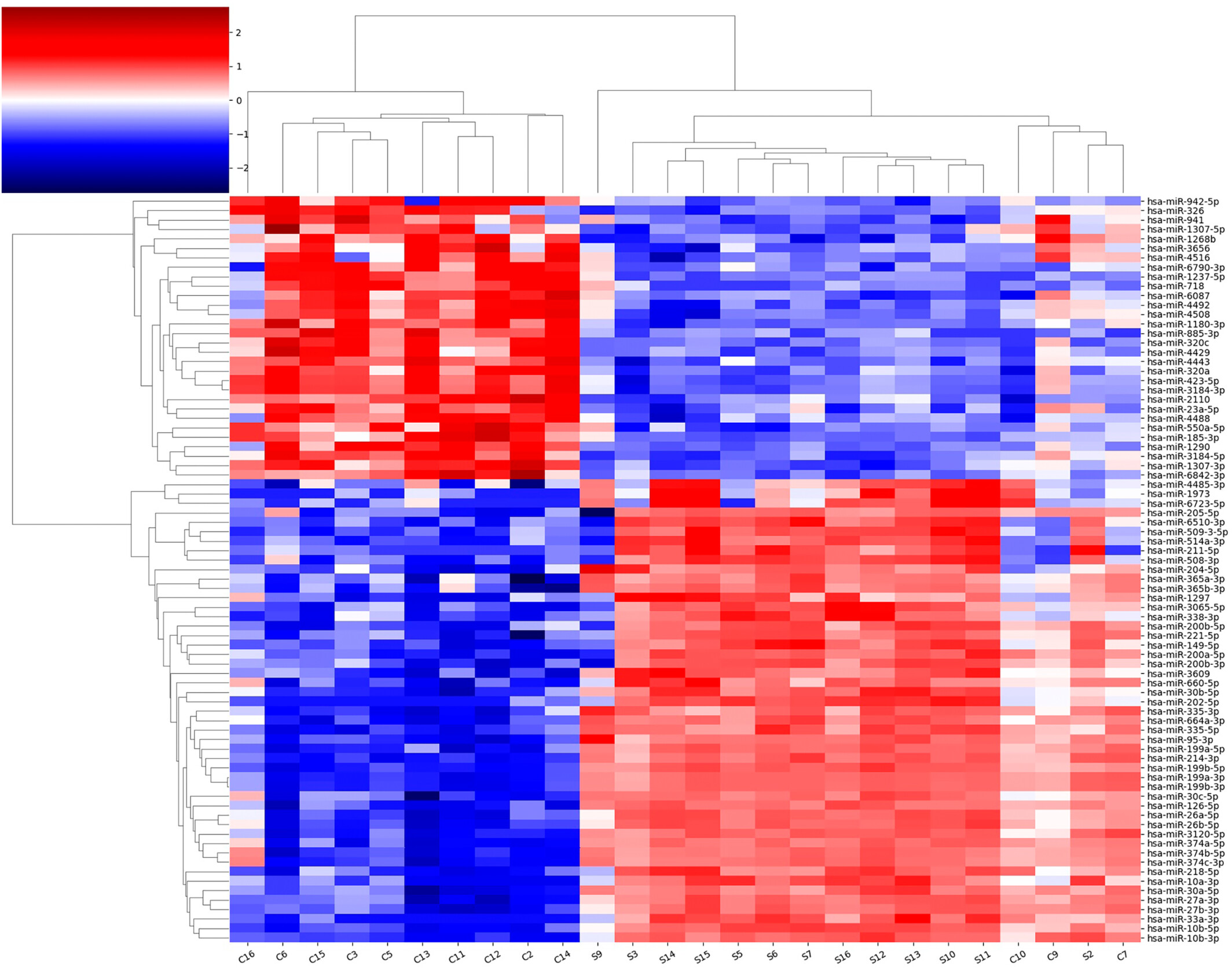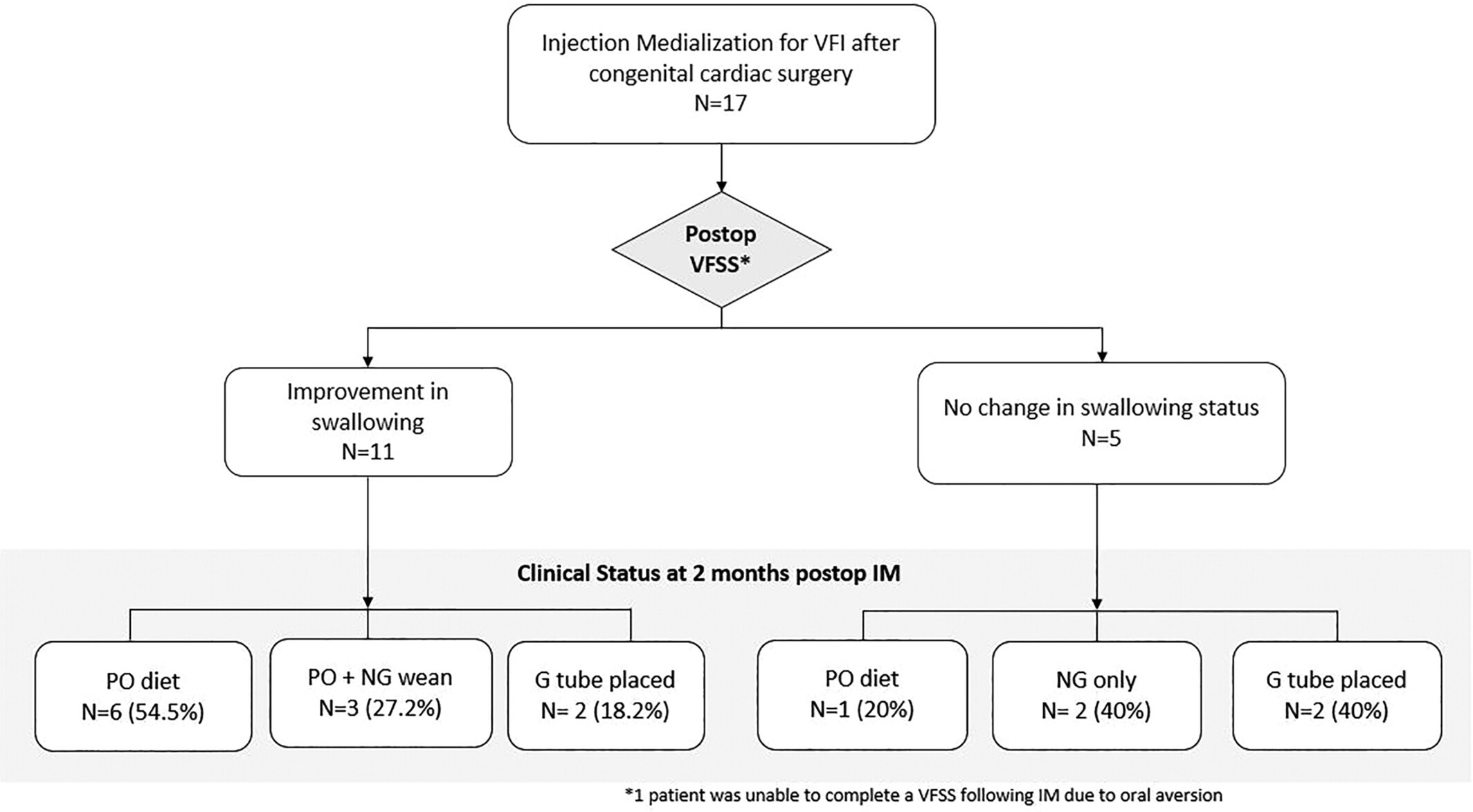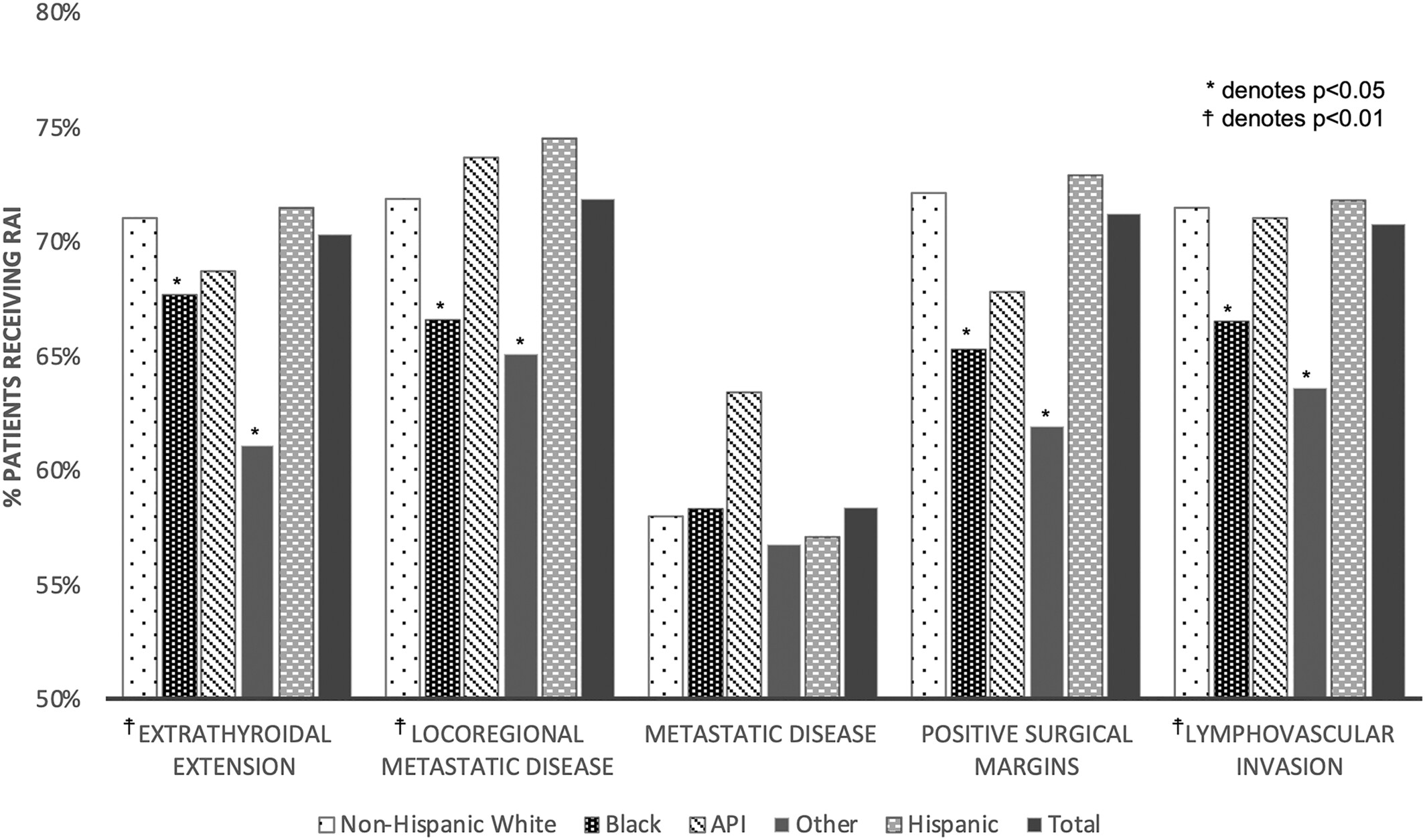Journal list menu
Export Citations
Download PDFs
Issue Information
Triological Society Best Practice
Where Does Hypoglossal Nerve Stimulator Implant Fit in the Surgical Management Algorithm of Obstructive Sleep Apnea?
- Pages: 4165-4166
- First Published: 06 May 2024
Systematic Review
Microbial Composition of the Laryngotracheal Region: A Systematic Review
- Pages: 4167-4175
- First Published: 10 May 2024
Quality of Life Outcomes After Pediatric Otitis Media Surgery: A Systematic Review and Meta-Analysis
- Pages: 4176-4185
- First Published: 26 April 2024
Blood, Sweat, and Tonsils: Bleeding After Abscess Tonsillectomy for Quinsy-A Meta-Analysis
- Pages: 4186-4195
- First Published: 13 April 2024
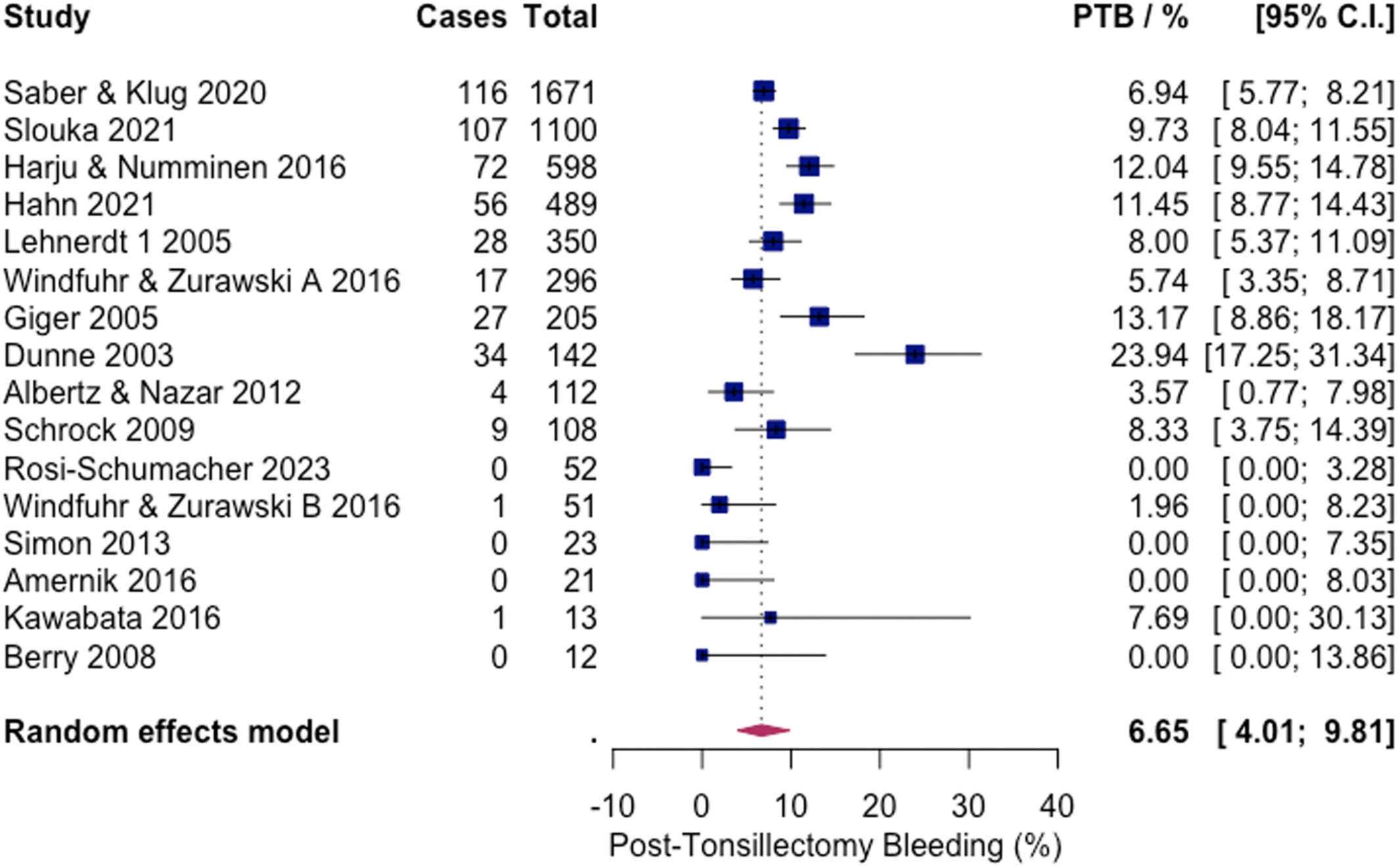
This meta-analysis investigates the prevalence of post-tonsillectomy bleeding (PTB) associated with abscess tonsillectomy for quinsy. Analyzing 18 eligible studies, the pooled PTB rate was 6.65%, with a higher incidence noted in bipolar technique compared to cold steel dissection. Our study draws attention to abscess tonsillectomy as a safe treatment option for quinsy.
Chimeric versus Multiple Flaps for Composite Oral Cavity Defects: A Systematic Review and Meta-Analysis
- Pages: 4196-4202
- First Published: 30 April 2024
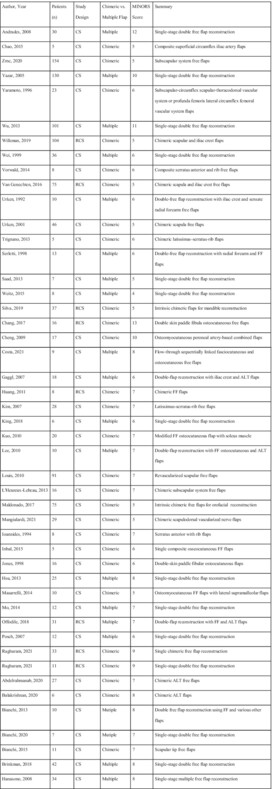
Chimeric flaps and multiple flaps are two techniques used for reconstructing complex head and neck defects, but they have not been extensively compared. In this large-scale meta-analysis, both approaches showed equivalent flap survival, as well as similar outcomes in terms of diet and speech resumption, rates of fistulization, and general complications. However, multiple flap patients had higher rates of operating room take-backs for anastomotic issues and longer hospital stays. Despite limitations in the literature, both chimeric and multiple flaps appear to be viable options for composite oral cavity defects.
Scoping Review
Use of THRIVE for Apneic Oxygenation in Transoral Laser Microlaryngeal Surgery: A Scoping Review
- Pages: 4203-4212
- First Published: 09 May 2024
Allergy, Rhinology, and Immunology
Case Report
Invasive Fungal Sinusitis in an Immunocompetent Patient After Sinus Surgery for Chronic Rhinosinusitis with Nasal Polyps and a Mycetoma
- Pages: 4213-4216
- First Published: 23 April 2024

We describe a case of acute invasive fungal sinusitis (AIFS) in an immunocompetent, non-diabetic patient after endoscopic sinus surgery. The patient presented with retro-orbital pain progressing to vision loss and was treated with surgical debridement, systemic antifungal therapy, and transcutaneous retro-bulbar injection of amphotericin B resulting in resolution of her symptoms and improvement in her vision. To our knowledge, this is the first report of AIFS in an immunocompetent patient presumed to be secondary to a combination of local immune suppression via topical steroids and mucosal trauma.
Original Report
Feasibility of Optical Biopsy During Endoscopic Sinus Surgery With Confocal Laser Endomicroscopy: A Pilot Study
- Pages: 4217-4224
- First Published: 18 May 2024

This study aimed to evaluate the feasibility of using optical biopsy with confocal laser endomicroscopy to distinguish between benign and malignant mucosa during endoscopic sinonasal surgery. Our results demonstrated that healthy and inflamed mucosa could be differentiated from malignant lesions with an accuracy of 84.1%, a sensitivity of 85.4%, and a specificity of 83.1%, along with substantial interrater agreement (Fleiss κ = 0.62).
Quantitative Comparison of Chatbots on Common Rhinology Pathologies
- Pages: 4225-4231
- First Published: 26 April 2024
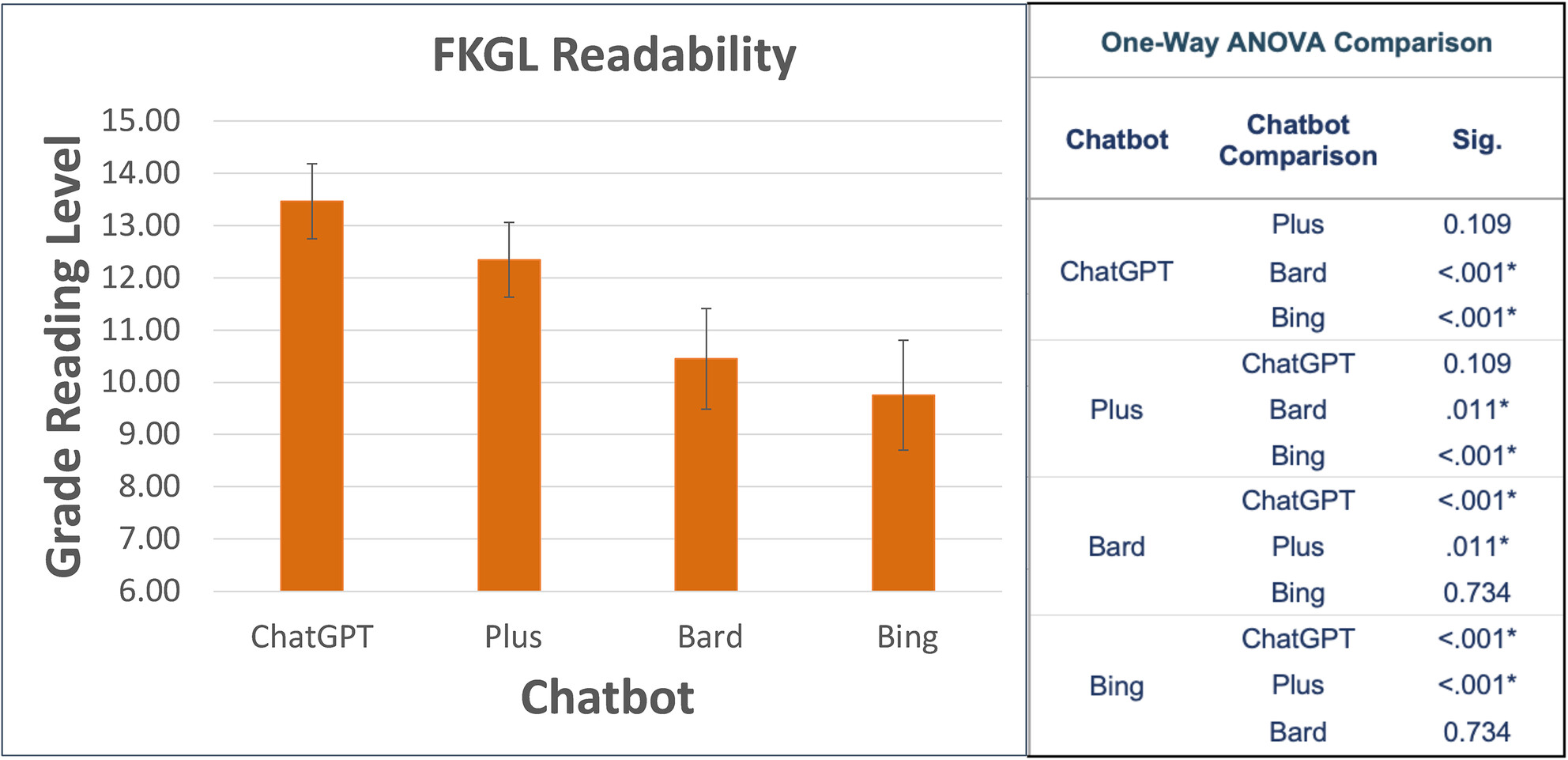
This study is the first to quantitatively analyze and compare the treatment of epistaxis, chronic sinusitis, sinus infection, allergic rhinitis, allergies, and nasal polyps across chatbots ChatGPT, ChatGPT Plus, Google Bard, and Microsoft Bing. The responses were analyzed on domains of readability, quality, understandability, actionability, accuracy, and comprehensiveness. On aggregate of the tested domains, our results suggest ChatGPT Plus and Google Bard are the most patient-friendly chatbots for the treatment of common pathologies in rhinology.
Long-Term Follow-Up of Post Radiation Complete Sinus Opacification in Sinonasal Cancer Patients
- Pages: 4232-4238
- First Published: 13 May 2024
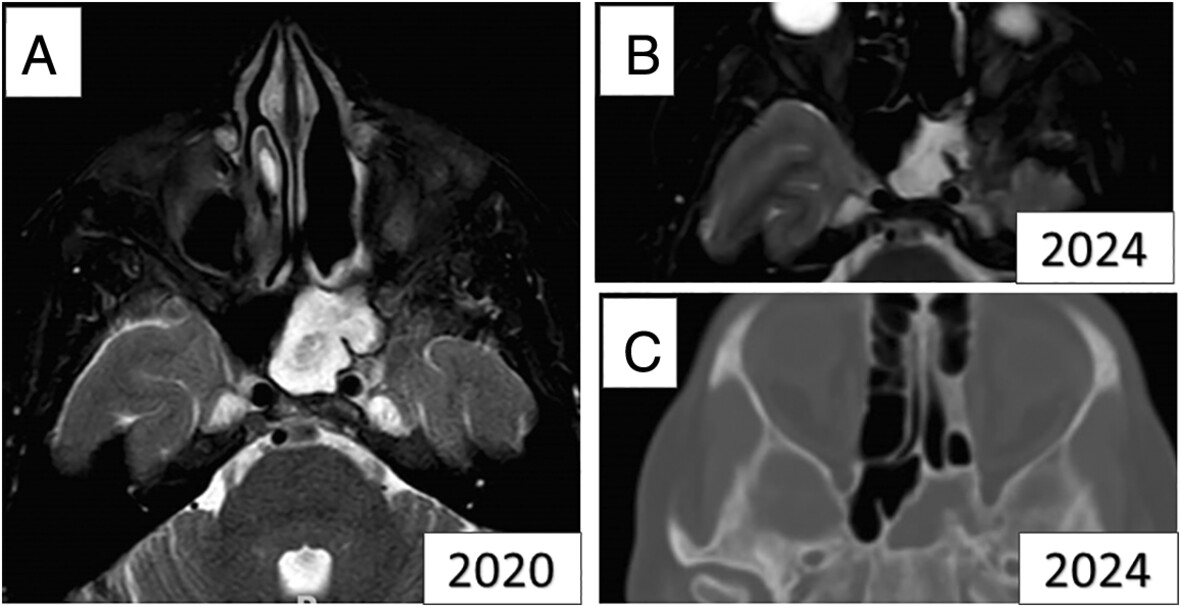
Some post-radiotherapy patients experience complete obliteration of the sphenoid or frontal sinuses, supposedly posing a risk for sinusitis or mucocele development. The objective is to comprehensively assess the natural history and outcomes of radiation-induced complete isolated sinus opacification. Our study revealed that a substantial number of post-radiation patients develop complete isolated sinus opacification, often in the frontal and sphenoid sinuses. These patients remained asymptomatic, and none required surgical intervention during nearly 5 years of follow-up.
E-Only Article
Letter to the Editor
In Reference to Real-World Adverse Events After Type 2 Biologic use in Chronic Rhinosinusitis with Nasal Polyps
- Page: E31
- First Published: 04 June 2024
In Response to Real-World Adverse Events After Type 2 Biologic use in Chronic Rhinosinusitis with Nasal Polyps
- Page: E32
- First Published: 04 June 2024
Bronchoesophagology
Original Report
An Ovine Model Yields Histology and Gene Expression Changes Consistent with Laryngotracheal Stenosis
- Pages: 4239-4245
- First Published: 13 May 2024
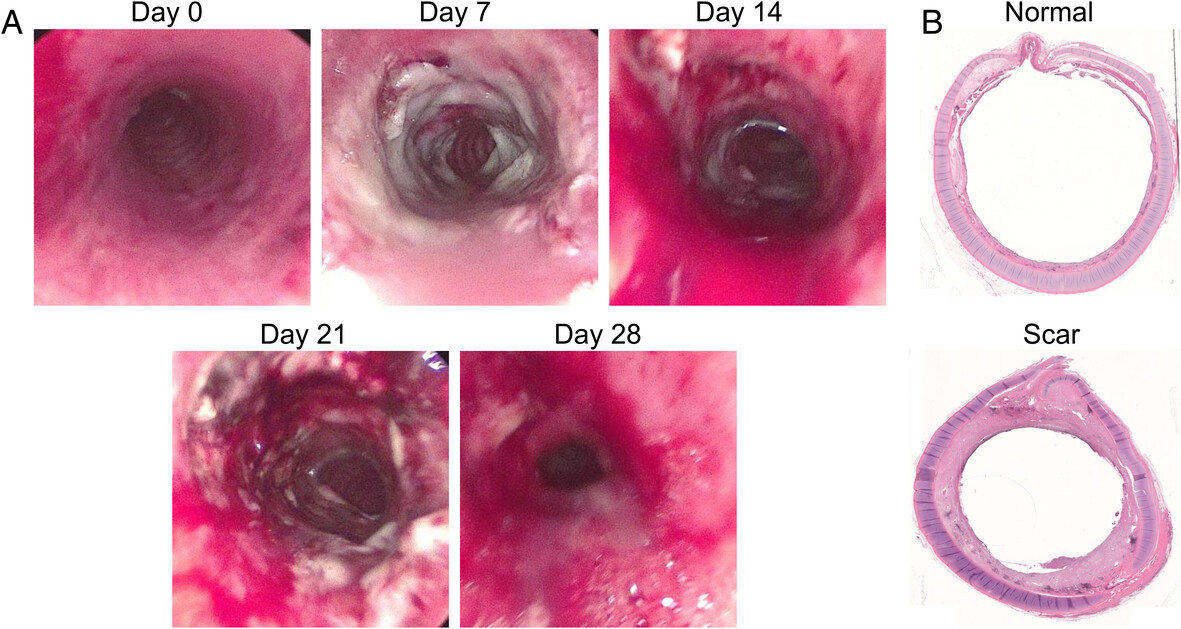
Large animal models are needed to assess novel therapies for laryngotracheal stenosis (LTS) prior to human translation. In this manuscript, we describe a large ovine model for LTS and show that airway stenosis can be reliably and safely produced via combined chemo-mechanical injury. We additionally show that stent placement is feasible and safe.
Comprehensive Otolaryngology
Original Report
A Novel Classification System and Surgical Strategies of First Branchial Cleft Anomalies
- Pages: 4246-4251
- First Published: 27 April 2024
Facial Plastic-Reconstructive Surgery
Original Report
Biochemical Variability of Nasal Cartilages: Implications in Functional Rhinoplasty
- Pages: 4252-4258
- First Published: 15 May 2024
Impact of Tissue Handling and Size Modification on Septal Chondrocyte Viability
- Pages: 4259-4265
- First Published: 25 June 2024

Chondrocyte viability was similar between 1 mm diced cartilage, scaled cartilage, and positive control samples. Conversely, pate cartilage samples had significantly less viability compared to positive controls, diced samples, and scaled samples, and it had similar chondrocyte viability compared to negative controls. On computational modeling, cartilage viability decreased to 50%, 26%, and 11% as the diced sample was cut from 1 mm edge length to 0.7–0.8 mm, 0.55–0.65, and 0.4–0.5. Similarly, cartilage viability decreased to 26% at 0.55–0.65 mm, 11% at 0.4–0.5 mm, and <5% at <0.4 mm edge length.
Outcomes of Radial Forearm Free Flap Closure With Split-Thickness Skin Graft Versus Primary Closure
- Pages: 4266-4273
- First Published: 24 May 2024
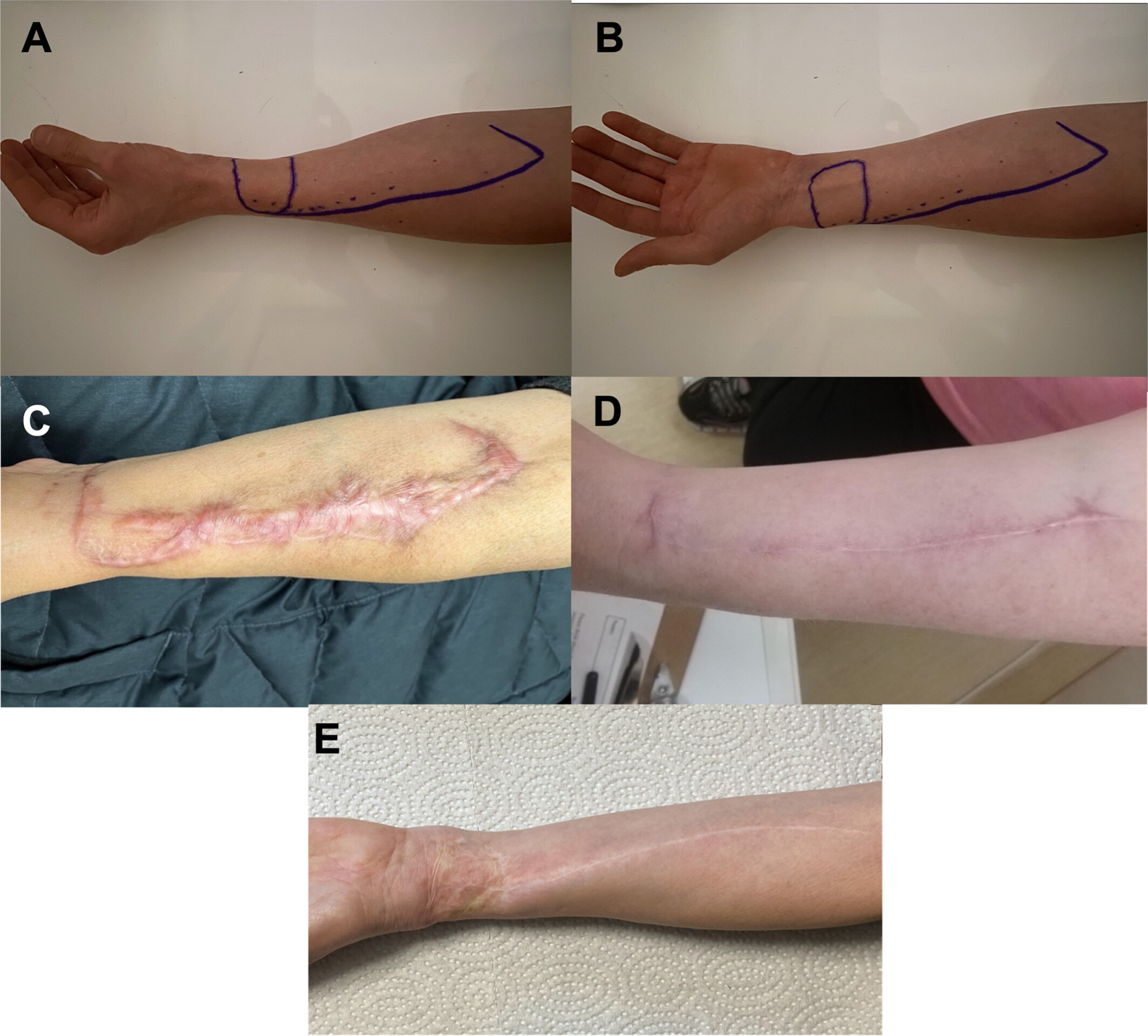
This study compares patient-reported functional and aesthetic outcomes of split-thickness skin graft (STSG) versus hatchet flap closure of radial forearm free flapdonor site using the Patient-Observer Scar Assessment Scale and Michigan Hand Outcome Questionnaire. In total, 81 patients participated in the study (39 STSG patients and 42 hatchet flap patients). STSG appeared to have less compromise in activities of daily living, better satisfaction and improved scar quality than hatchet flap, but a higher rate of tendon exposure.
Head and Neck
How I Do It
A case report of Transnasal Endoscopic Drainage for Upper Parapharyngeal Abscess
- Pages: 4274-4277
- First Published: 30 April 2024
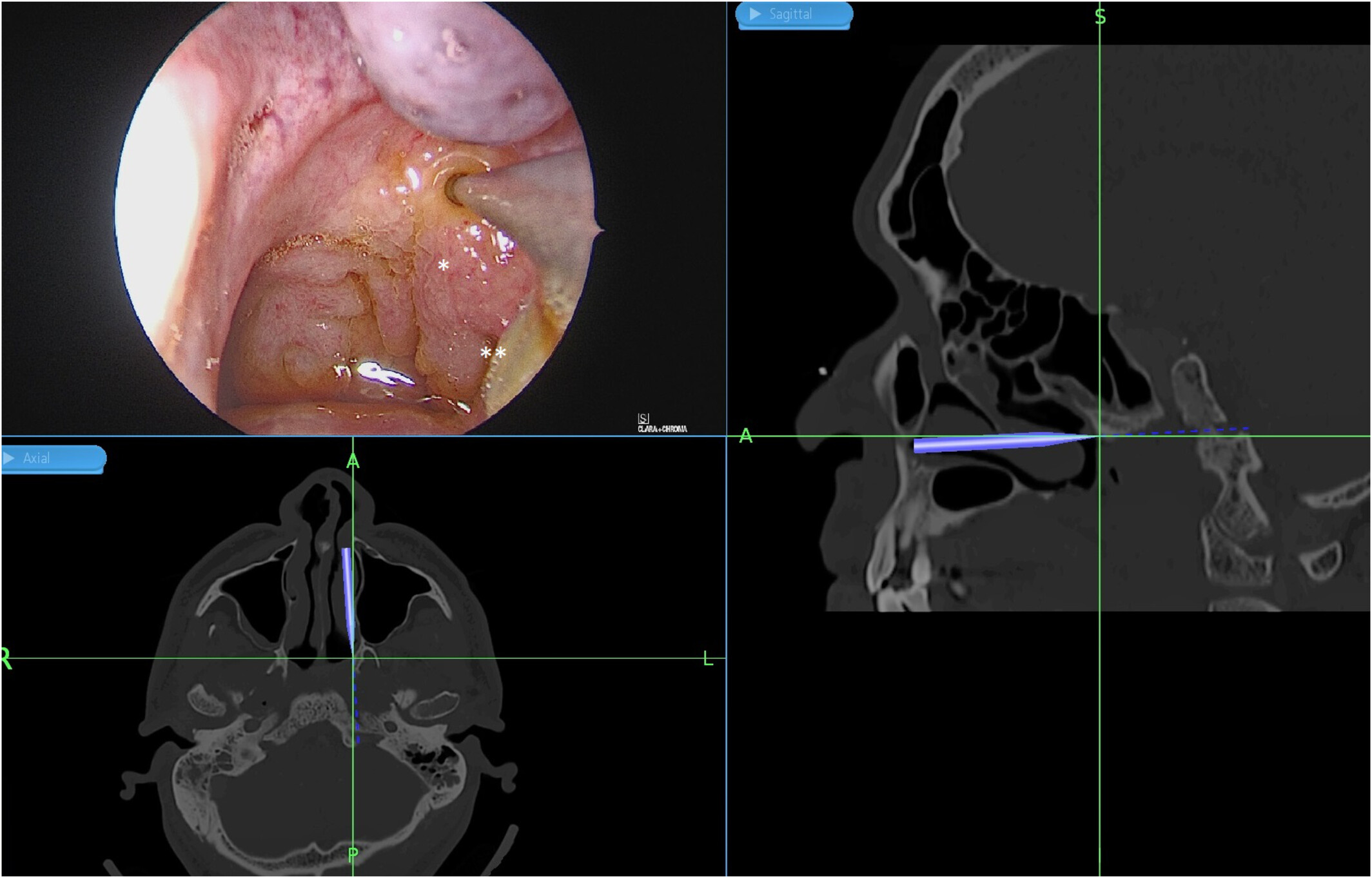
We report a case of upper parapharyngeal abscess arising from progression of a central skull base osteomyelitis, in a patient with poorly controlled diabetes mellitus. Our case is unusual for its presentation in an upper parapharyngeal location, involvement of the skull base, and poor response to medical treatment, hence requiring transnasal endoscopic surgical drainage to achieve definitive treatment. Here, we share our experience with a safe and effective technique of transnasal endoscopic drainage of a parapharyngeal abscess. Laryngoscope, 134:4274–4277, 2024
Original Report
Modified Frailty Index Associates With Transoral Robotic Surgery Complications and Survival: A National Database Study
- Pages: 4278-4283
- First Published: 23 April 2024

The primary aim of this study is to understand and validate the capacity of the modified frailty index (mFI-5) to predict outcomes for patients undergoing transoral robotic surgery for head and neck cancer. The results of this study provide compelling evidence of the link between increased frailty as defined by mFI-5 and various postoperative complications, including mortality, infection, and pneumonia better predicted than by age alone.
Patterns of Discordance Between Clinical and Pathologic Stage in Head and Neck Cancer
- Pages: 4284-4291
- First Published: 24 April 2024
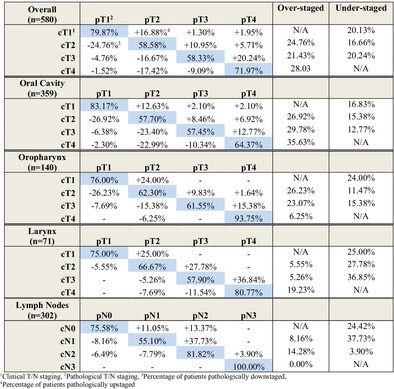
While pathologic staging is considered the gold standard in head and neck cancers, clinical staging guides initial treatment plans and patient counseling. This study aims to identify specific stages and primary tumor subsites where discordance between clinical and pathologic staging is high. We found that T2 Oral Cavity, T2 Oropharynx, T3 Larynx, and N1 Lymph Node had the highest discordance while T1 Larynx, T4 Oropharynx, N0 Lymph Node, and N3 Lymph Node had the lowest.
Nodal Metastases in Stage 3 Head and Neck Melanoma: Patterns of Metastases and Patterns of Failure
- Pages: 4292-4297
- First Published: 03 June 2024
Characterization of the MSAP Flap in Head and Neck Surgical Oncology: A 3D Cadaveric Study
- Pages: 4298-4303
- First Published: 28 May 2024

The medial sural artery perforator flap (MSAP) is a versatile free flap used for reconstruction of oral cavity defects. However, anatomy of the cutaneous perforators has not been well studied. Anatomical characterization of the MSAP flap using 3D analysis can assist reconstructive surgeons in understanding the relevant anatomy and optimizing the surgical technique for MSAP flap harvest.
Laryngology
Case Report
Immune Checkpoint Inhibitor Induced Supraglottitis: A Case Series
- Pages: 4304-4306
- First Published: 14 May 2024
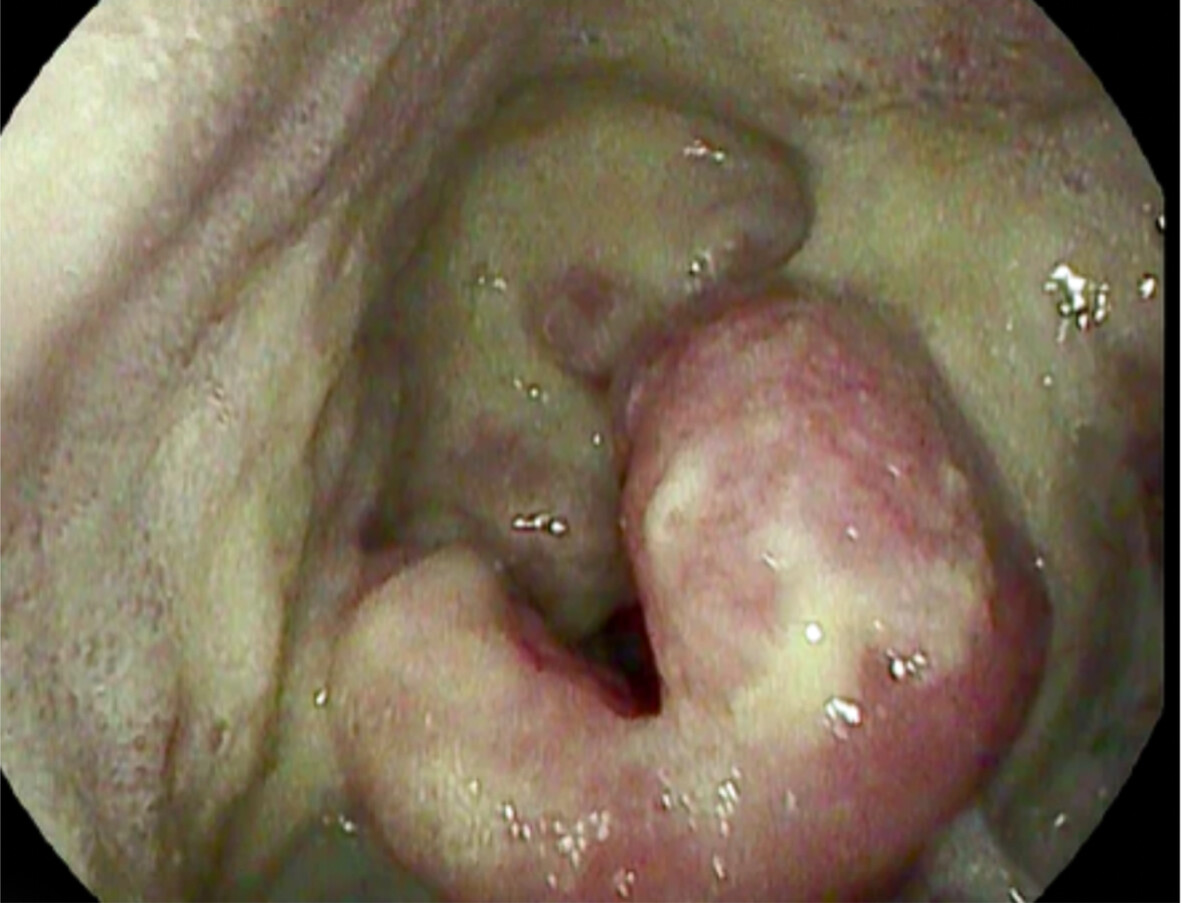
Immune checkpoint inhibitors (ICIs) have demonstrated remarkable efficacy in the treatment of various advanced and metastatic malignancies in recent years and have proven to be pivotal in contemporary oncological strategies. As the utilization of ICIs expands, so does the recognition of adverse effects, highlighting the need for vigilance in monitoring and reporting outcomes. We present a case series of two cases of supraglottitis in patients treated with ICIs, including management strategies, thus adding a novel dimension to the respiratory implications of these agents.
Original Report
Airway and Voice Outcomes After Thyroarytenoid Myomectomy for Bilateral Vocal Fold Immobility
- Pages: 4307-4312
- First Published: 28 May 2024
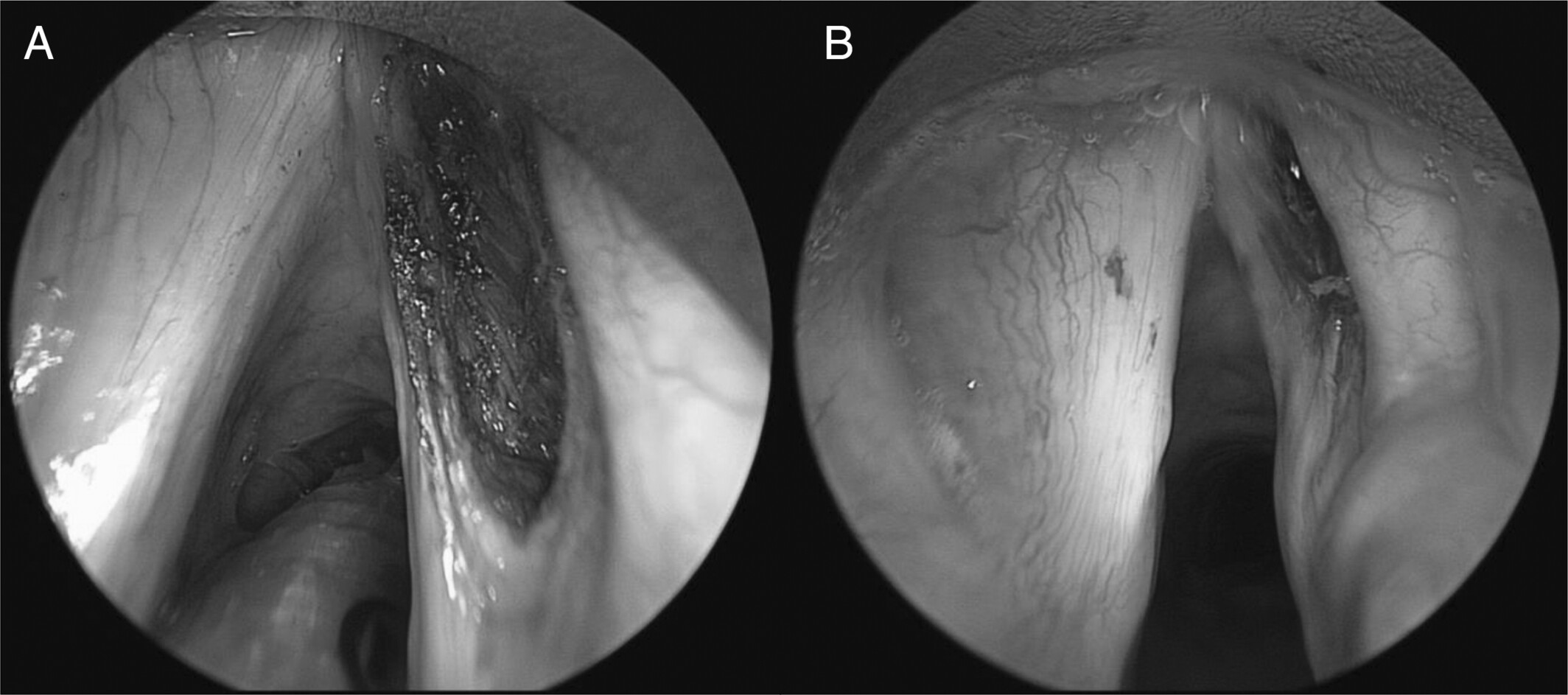
Thyroarytenoid myomectomy demonstrated significant improvement in patient reported outcomes from bilateral vocal fold immobility while not significantly altering glottal structure. Data from this study suggest thyroarytenoid myomectomy improves dyspnea symptoms in patients with bilateral vocal fold immobility without impairing voice.
The Global Experience of Laryngeal Transplantation: Series of Eleven Patients in Three Continents
- Pages: 4313-4320
- First Published: 06 July 2024
Multi-Instance Learning for Vocal Fold Leukoplakia Diagnosis Using White Light and Narrow-Band Imaging: A Multicenter Study
- Pages: 4321-4328
- First Published: 27 May 2024
New Model and Public Online Prediction Platform for Risk Stratification of Vocal Cord Leukoplakia
- Pages: 4329-4337
- First Published: 03 June 2024
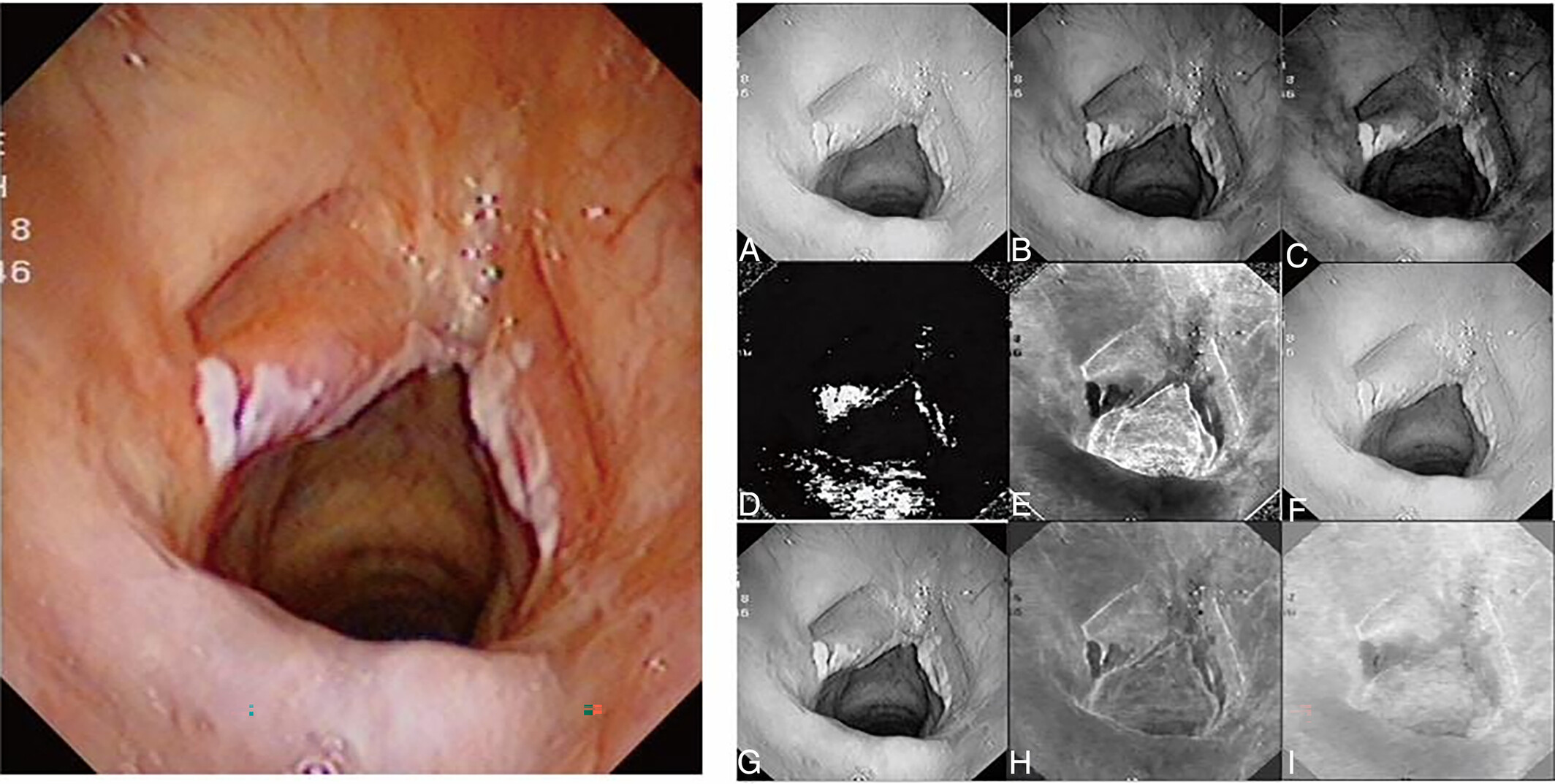
The current diagnosis and treatment of vocal cord leukoplakia is relatively chaotic, lacking effective high-risk assessment methods. This study established and validated a model for vocal cord leukoplakia risk stratification, it not only has high accuracy, but also has been developed into a public prediction platform, which can be used and tested by everyone, and has strong practicality. This study may provide significant assistance to otolaryngologists in the treatment of vocal cord leukoplakia.
Olfaction-Chemosensation
Original Report
Impact of Nutritional Status on COVID-19-Induced Olfactory Dysfunction
- Pages: 4338-4343
- First Published: 30 July 2024
Otology-Neurotology
Case Report
An Ear Mystery: Conductive Hearing Loss with Normal Acoustic Reflexes and VEMPs
- Pages: 4344-4346
- First Published: 10 May 2024
Sudden Deafness and Vestibulopathy in a Patient with Antibody Treatment for Metastatic Lung Cancer
- Pages: 4347-4350
- First Published: 26 April 2024

We describe the case of a patient who presented with sudden onset vertigo and bilateral deafness while under immune checkpoint therapy for metastatic lung cancer. The diagnostic workup confirmed bilateral sensorineural deafness and bilateral loss of vestibular function, while imaging revealed enhancement of the vestibulocochlear nerve. Initially, immunotherapy with PD-L1 antibody atezolizumab was the assumed cause of the described symptoms. However, further findings strengthened the suspicion of meningeosis neoplastica.
Original Report
Development and Initial Validation of a Meniere's Disease Quality of Life Instrument: The MenQOL
- Pages: 4351-4357
- First Published: 30 April 2024
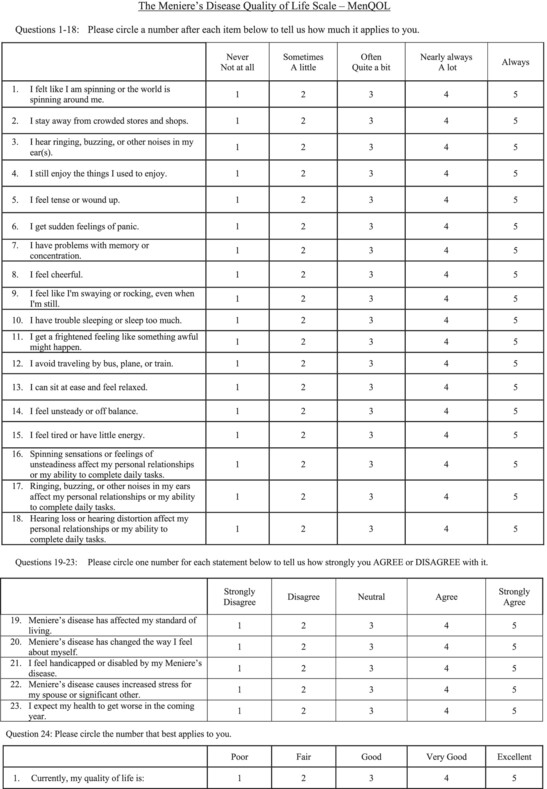
We describe the development and validation of a questionnaire for the assessment of quality of life in Meniere's disease, the MenQOL. The MenQOL is a simple, valid patient-reported outcome measure, which may be used to assess the effects of treatment on disease-specific quality of life in patients with Meniere's disease.
Costs of Severe to Profound Hearing Loss & Cost Savings of Cochlear Implants
- Pages: 4358-4365
- First Published: 14 May 2024
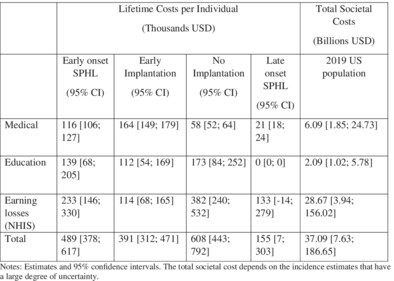
This study estimated costs of severe to profound hearing loss, including costs and cost-savings associated with cochlear implantation. The estimated lifetime cost of an individual born with severe to profound hearing loss is $484,274 with costs being lower for those who received a cochlear implant before 18 months of age compared to those who did not receive an implant. The annual societal costs for the US population with severe to profound hearing loss were estimated to be $37 billion.
Lipids and Statin Medication With Sensorineural Hearing Loss: A Mendelian Randomization Study
- Pages: 4366-4373
- First Published: 28 May 2024
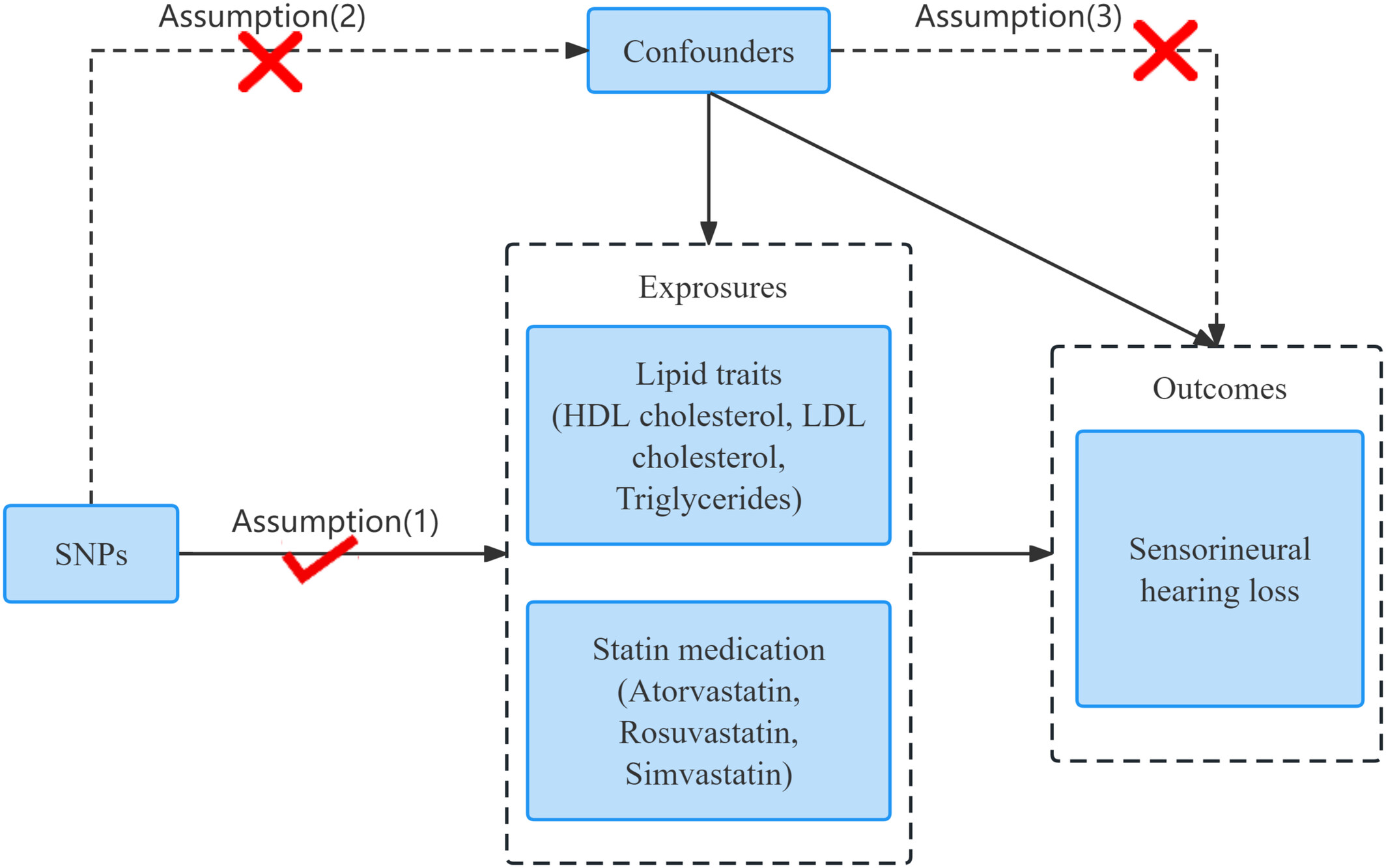
(1) This study is the pioneering effort employing Mendelian Randomization (MR) analysis to elucidate the relationship between lipids, statins, and sensorineural hearing loss (SNHL). (2) Our findings establish a causal link between elevated triglyceride levels and an increased risk of SNHL. (3) Although statins have demonstrated potential in reducing the risk of SNHL, their primary mechanism of action might not solely hinge on lowering triglycerides.
Next-generation Sequencing of MicroRNA in Acquired Middle Ear Cholesteatoma
- Pages: 4374-4382
- First Published: 22 May 2024
The Association Between Medicaid Expansion and Disparities in Vestibular Schwannoma Incidence
- Pages: 4383-4388
- First Published: 04 June 2024
Pediatrics
Original Report
Micro-CT Imaging of Tracheal Development in Down Syndrome and Non-Down Syndrome Fetuses
- Pages: 4389-4395
- First Published: 27 April 2024
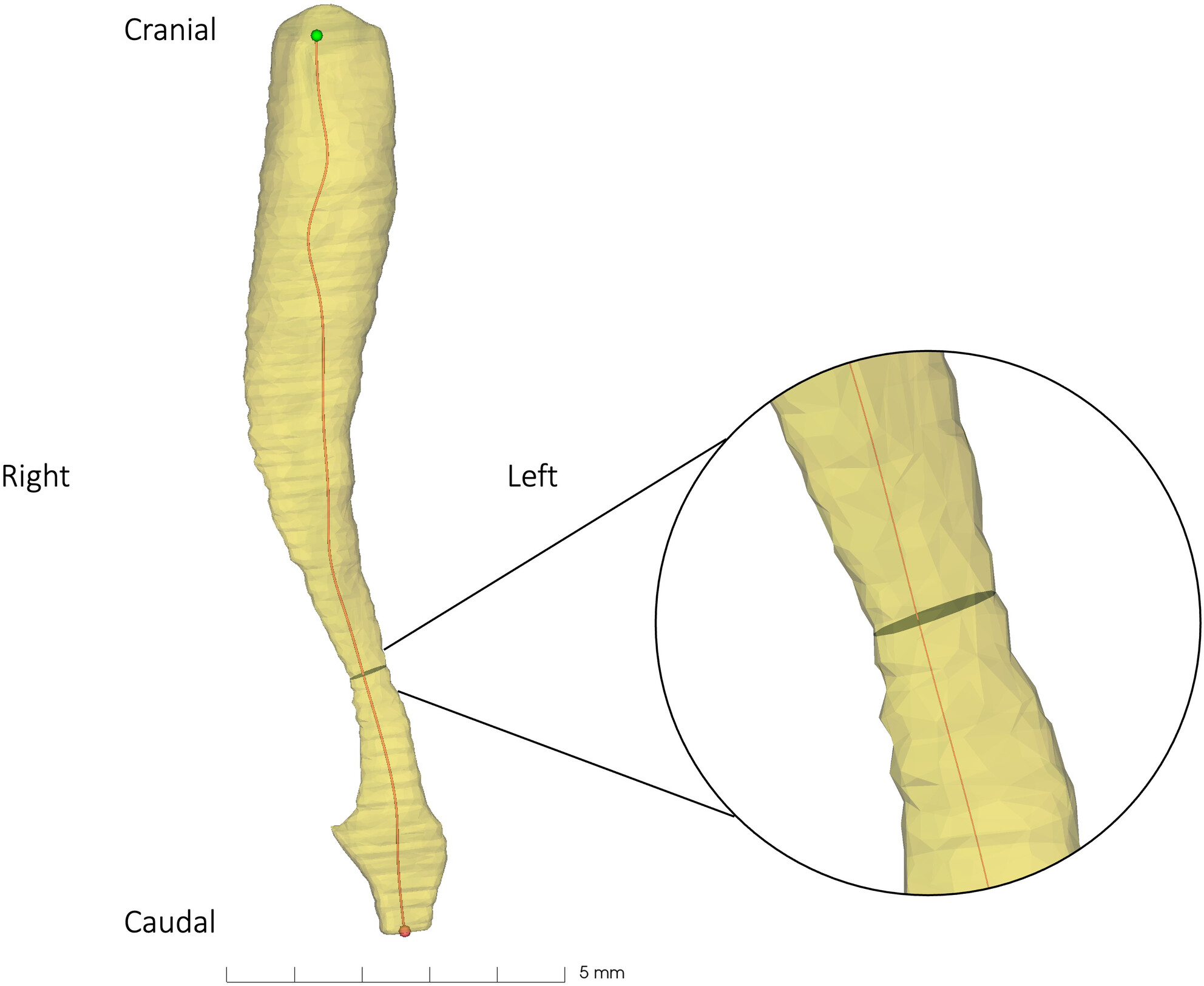
Micro-CT of the trachea in Down syndrome and non-Down syndrome fetuses showed that morphology is similar between 13 and 21 weeks of gestation. The narrowed tracheal diameter characteristic for Down syndrome may occur later in fetal development or results from postnatal intubation trauma. The narrowest part of the trachea is in majority of fetuses the middle third.
Injection Medialization in Infants with Vocal Fold Immobility Improves Dysphagia
- Pages: 4396-4401
- First Published: 27 April 2024
Congenital Sternoclavicular Sinus—Case Series of a Rare Lower Neck Deformity
- Pages: 4402-4408
- First Published: 30 April 2024
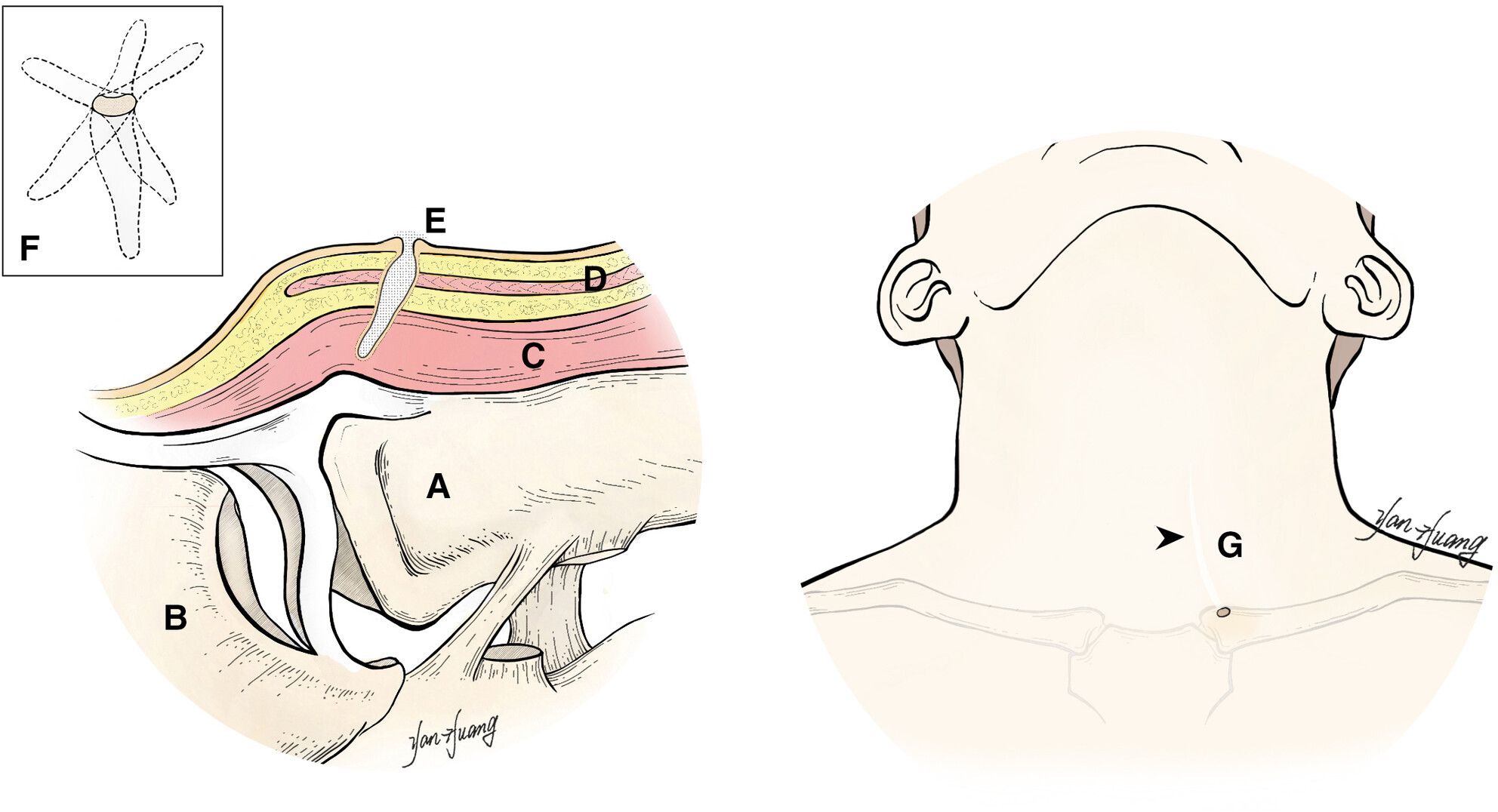
CSCS, though uncommon, presents distinct regional involvement along with pathognomonic clinical and pathological features. CSCS is marked by a pale skin streak extending superiorly from the orifice—a diagnostic “skin streak sign.” Complete surgical excision constitutes an effective treatment modality for CSCS.
How I Do It
Creating Patient-Specific 3D-Printed Airway Models for Slide Tracheoplasty
- Pages: 4409-4413
- First Published: 21 May 2024
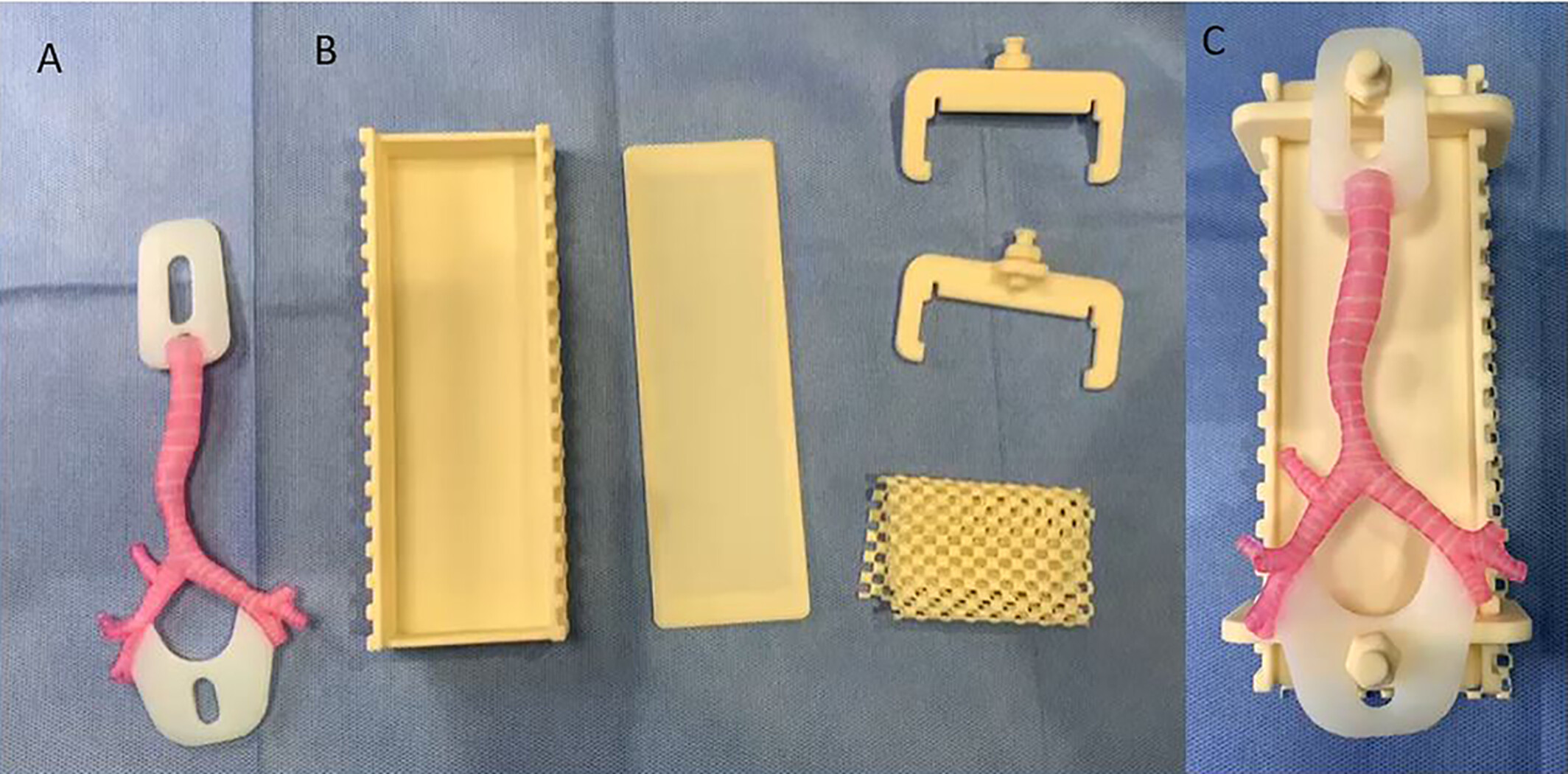
This protocol describes the method for creating 3D-printed trachea models for use in high-fidelity simulation-based training and advanced surgical planning for pediatric patients undergoing slide tracheoplasty. The goal is to provide a template and methodology to allow for replicability and more widespread dissemination of these models to improve clinical training and patient care. Laryngoscope, 134:4409–4413, 2024
How I Do IT
A Modified Single-Stage Endoscopic Repair for Bilateral Choanal Atresia
- Pages: 4414-4417
- First Published: 08 April 2024
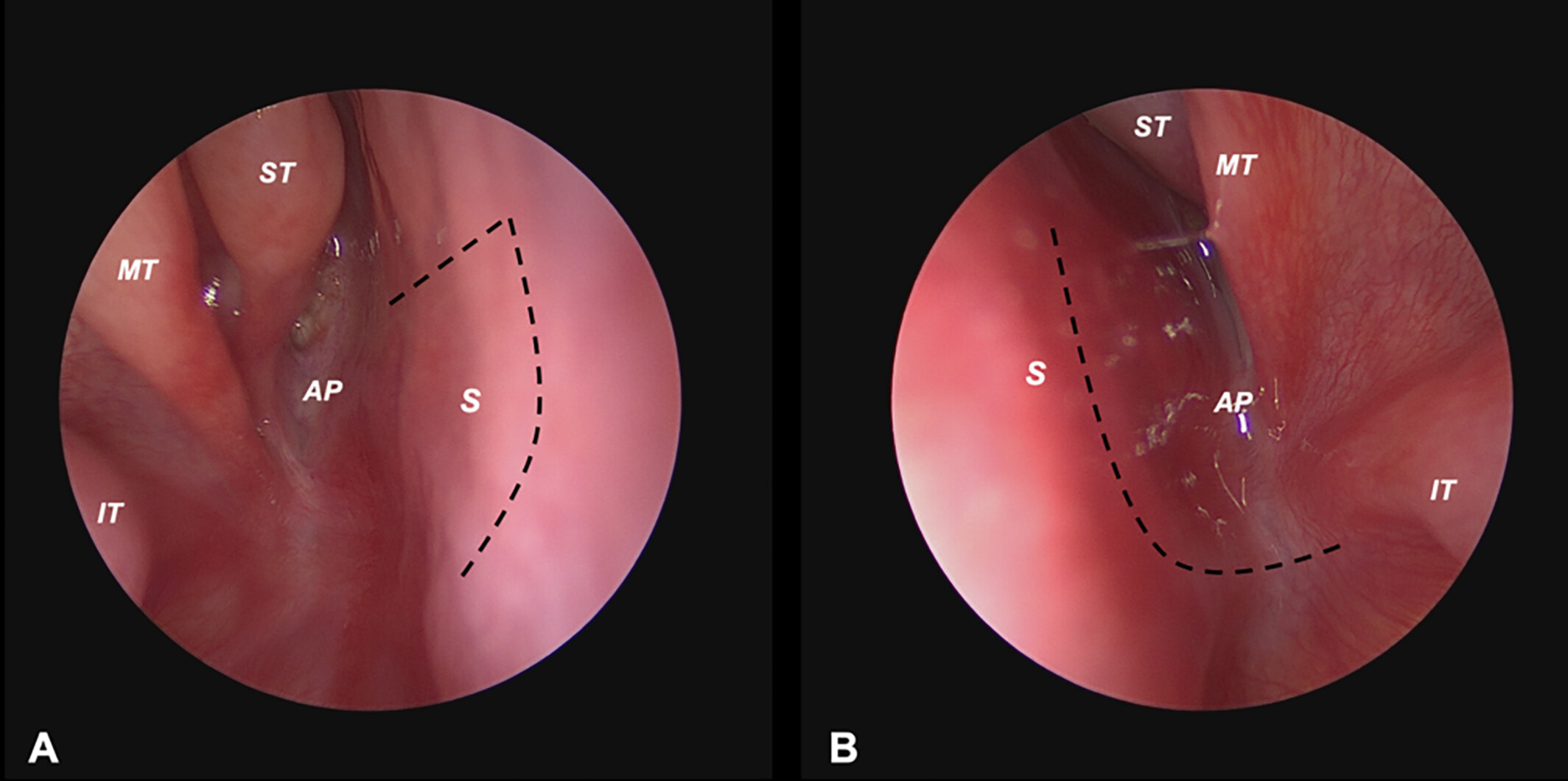
The work illustrates a step-by-step surgical approach to demonstrate technical feasibility of a single-stage endoscopic repair for bilateral choanal atresia with adjuvant bioabsorbable steroid-eluting stent placement to safely mitigate unique perioperative challenges in the pediatric population. Laryngoscope, 134:4414–4417, 2024
Sleep Medicine
Case Report
The Whimsical Nature of Airway Obstruction during Drug-Induced Sleep Endoscopy
- Pages: 4418-4420
- First Published: 23 April 2024
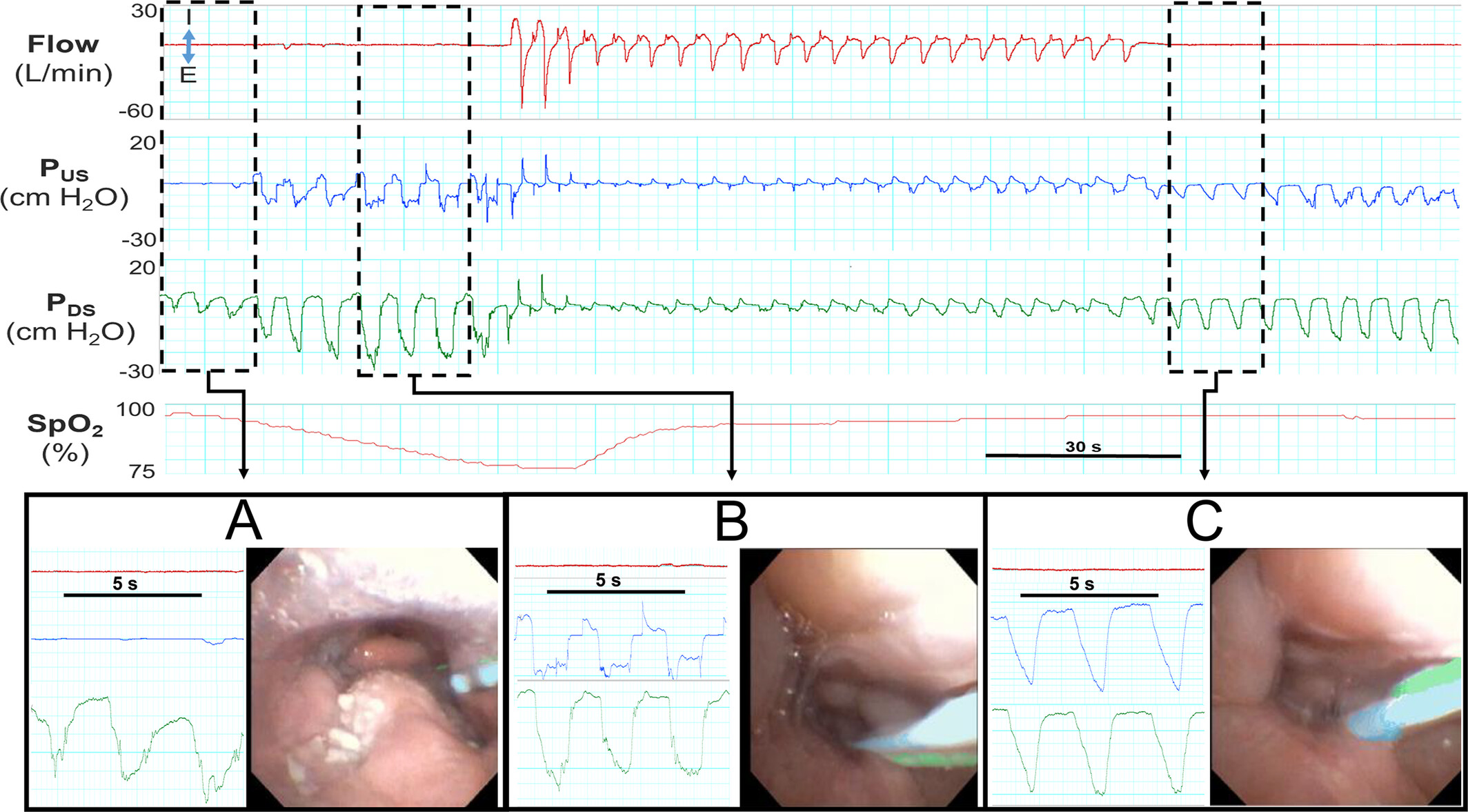
A 47-year-old male patient diagnosed with severe obstructive sleep apnea (OSA) sought alternatives to positive airway pressure, prompting evaluation with drug-induced sleep endoscopy (DISE). He underwent a specialized DISE with nasal airflow and pharyngeal pressure monitoring. During obstructive apneas, airflow and pressure signals demonstrated dynamic, multilevel upper airway collapse, with shifting sites of airflow obstruction as respiratory effort increased. This case report illustrates how quantitative airflow and pressure measurements can complement the standard DISE exam and aid in surgical decision-making.
Thyroid, Parathyroid, and Endocrine
Original Report
The Impact of Race and the Affordable Care Act on Thyroid Carcinoma Outcomes: A National Cancer Database Study
- Pages: 4421-4430
- First Published: 06 June 2024




